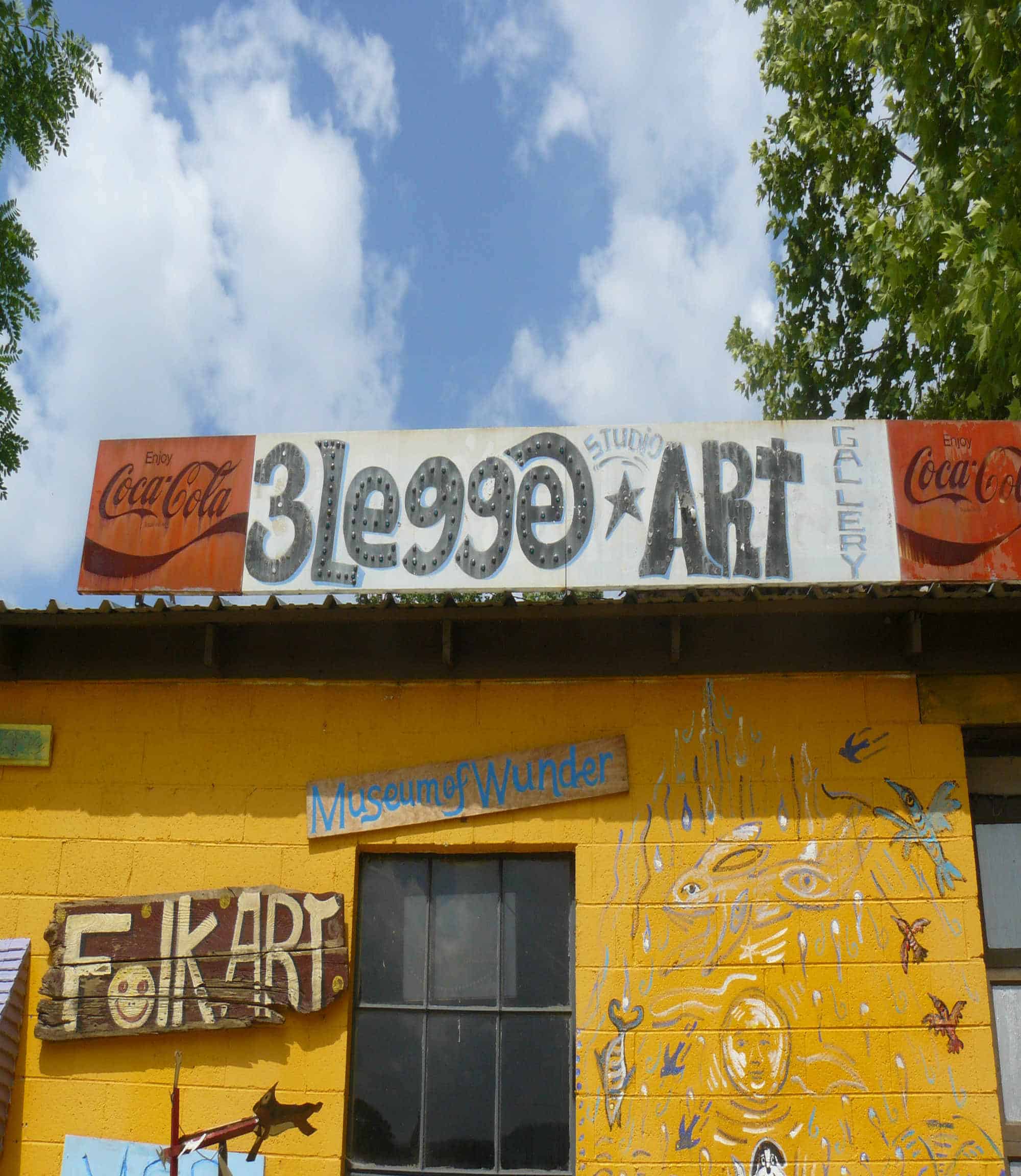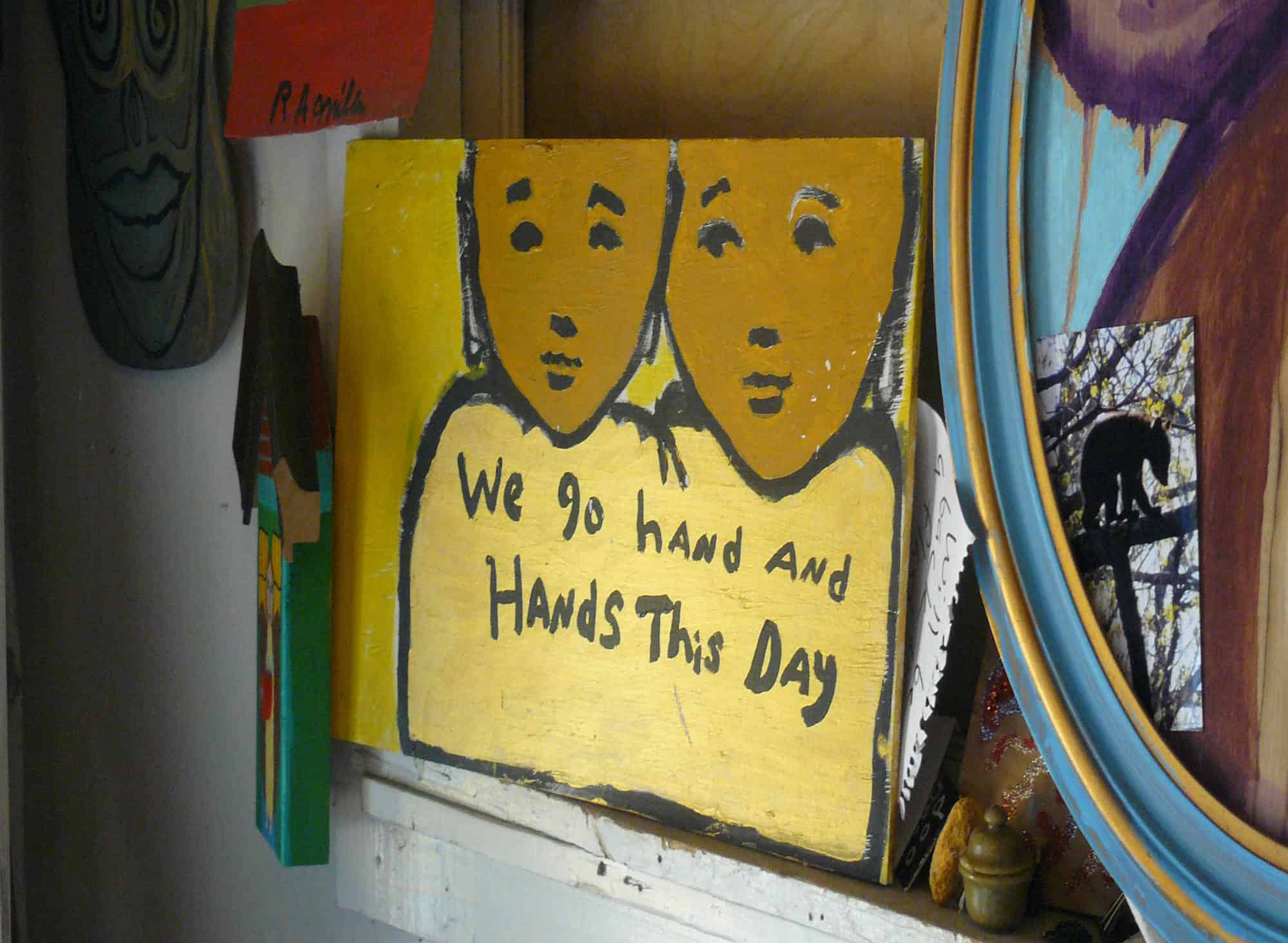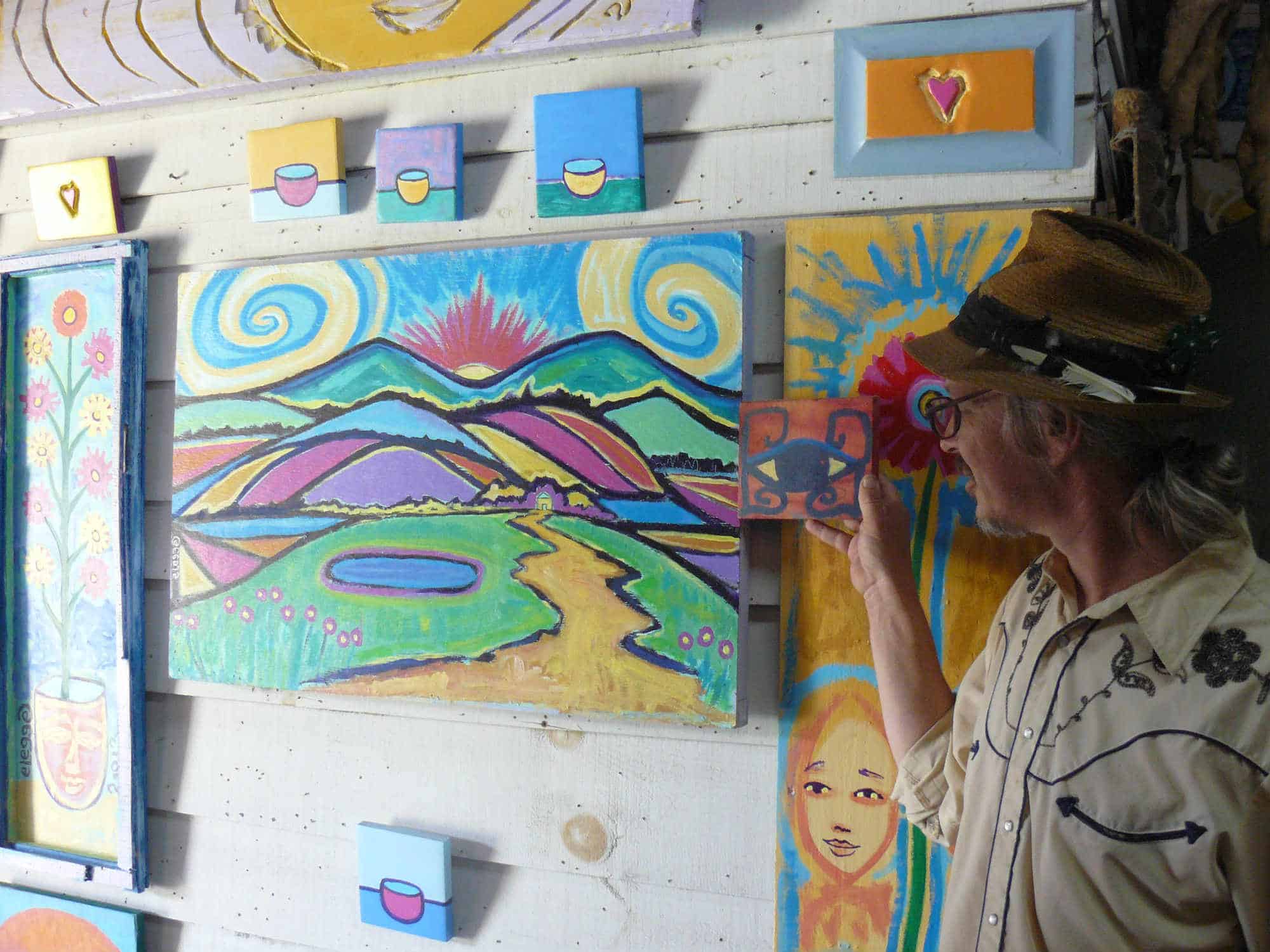
I just wanted to start off this blog entry by stating that the Eric Legge interview and article is one of my favorites from my time in Foxfire. I went on this interview when I was a freshman in high school; and, although struck by Eric’s art at the time, I had no idea what this interview would come to mean to me in the future. Because of Eric’s interview and my time in Foxfire, I’ve come to learn that art history is a subject that I’m immensely passionate about. The preservation and adoration of art from all around the globe is something that I want to dedicate my life to, and, as a current high school senior, becoming an art historian is now the focus of my further educational and career goals.
My time in Foxfire has allowed me to study folk art in many forms – from Eric Legge’s paintings to Beth Kelly Zorbanos’s cornshuck dolls and TJ Stevens’s face jugs. Folk art is a large part of the culture of Appalachia because many artists in the area have never had formal training. Folk art itself is also very individualistic and expressive of the artist and his or her surroundings, which is something that Eric Legge’s art does greatly.
The art that Eric Legge creates is unique in that he truly seeks to express and capture his feelings regarding his environment. In our interview with him, Eric talks about how where he lives impacts his art, specifically his time living in the Wolffork Valley area, “[Wolffork Valley] was an inspiring place to live. I mean, it’s all inspiring up here, but that was like living in a postcard.”

What I think is so touching about Eric’s art and the meaning behind it is that we live in an age where a majority of people don’t even care enough to look up from their phones–an age where one’s surroundings or environment doesn’t seem to matter. We constantly have this method of escape in a tiny rectangle in our hands, and this escape has allowed the general population to forget about their surroundings rather than admiring the greatness around them. As a high school student, I’m all too familiar with the disconnected attitude that my peers adopt once they’re immersed in their phones.
[Wolffork Valley] was an inspiring place to live. I mean, it’s all inspiring up here, but that was like living in a postcard.
In the modern age, I believe that an artist who loves his environment enough to paint it, and paint it, and paint it again is truly sending a message. In Eric Legge’s interview, he states that he believes that passion and love are intertwined–that if you love something, you’re going to be passionate about it. I believe that this holds true regarding Legge and the area in which he lives: he truly does love it, and in turn he is passionate about it.
The way that Eric captures the Blue Ridge Mountains truly is unique. Rather than using earth-tones to capture the moment, Eric aspires to capture feeling. In his interview, he stated that he viewed color in his paintings as a form of communication. By using bold and bright colors in his art, Eric’s art radiates positivity.

Eric’s art also radiates positivity in that he encourages his audience to say, “Yes!” and accept life as it comes with some of his art pieces.
One of my favorite quotes from the Eric Legge interview would be: “[I love] the beauty and the mountains, and there are some places where you just feel like it’s home. Then every day here—the way the seasons change is really beautiful, and the wildlife and the flora and the fauna. It’s like a lost Eden to me. I walk through the woods and I feel like I’m in Disneyland, but I don’t gotta pay nothing. And all the leaves are waving at me and the trees, and the birds are singing.” The fact that Eric is able to capture so much and express his love for the area so greatly through his art is truly inspiring, both as an artist myself and as a student growing up in Rabun County area.
~ Heather Giovino
Heather is a current Foxfire senior editor and senior at Rabun County High School. She’s been a part of the Foxfire program for all four years of her high school career, and hopes to pursue a degree in art history in the future.

Hello Heather
I am a huge fan of Eric Legge have taken many a friend and relatives to his studio and I also own two of his paintings. I have loved and visited the Foxfire Museum and village as well and have read many of the Foxfire books. I am reaching out because yesterday I visited my Sister In Laws home studio in Griffin Georgia. Mind you I have been to her and her husband’s home a few times over the last 24 years but it was always at Christmas or Thanksgiving when so many others were there. To get into the house you must walk through her studio which is completely filled with the most amazing folk art many of found objects and art pieces solely created by Sister In Law Sara Rush. Yesterday I was absolutely floored by what my heart and eyes had not captured in my past visits. I plan to take her to Eric’s studio hopefully within the next few weeks weather and studio hours permitting. I would love to know where or how I would submit photographs or originals of her work for folk art recognition purposes. She is in her late to mid seventies and I just can’t help but believe she and Eric somehow are kindred spirits. I so hope he is there when we visit. Thank you for your time reading this Heather and Happy New Year 😊